- Home
- F. Paul Wilson
Signalz
Signalz Read online
SIGNALZ
An Adversary Cycle Novel
(Prelude to Nightworld)
By F. Paul Wilson
A Crossroad Press Production
Digital Edition published by Crossroad Press
Smashwords edition published at Smashwords by Crossroad Press
Copyright © 2020 F. Paul Wilson
ISBN: ePub Digital Edition - 978-1-951510-44-2
ISBN: Trade Hardcover - 978-1-951510-43-5
ISBN: Trade Paperback - 978-1-951510-42-8
Cover images courtesy of IsaOpp and Budgme via Unsplash
LICENSE NOTES
This eBook is licensed for your personal enjoyment only. This eBook may not be re-sold or given away to other people. If you would like to share this book with another person, please purchase an additional copy for each person you share it with. If you’re reading this book and did not purchase it, or it was not purchased for your use only, then you should return to the vendor of your choice and purchase your own copy. Thank you for respecting the hard work of this author.
Meet the Author
F. PAUL WILSON is an award-winning, bestselling author of sixty books and nearly one hundred short stories spanning science fiction, horror, adventure, medical thrillers, and virtually everything between.
His novels The Keep, The Tomb, Harbingers, By the Sword, The Dark at the End, and Nightworld were New York Times Bestsellers. The Tomb received the 1984 Porgie Award from The West Coast Review of Books. Wheels Within Wheels won the first Prometheus Award, and Sims another; Healer and An Enemy of the State were elected to the Prometheus Hall of Fame. Dydeetown World was on the young adult recommended reading lists of the American Library Association and the New York Public Library, among others. His novella Aftershock won the Stoker Award. He was voted Grand Master by the World Horror Convention; he received the Lifetime Achievement Award from the Horror Writers of America, and the Thriller Lifetime Achievement Award from the editors of Romantic Times. He also received the prestigious San Diego Comic-Con Inkpot Award and is listed in the 50th anniversary edition of Who's Who in America.
His short fiction has been collected in Soft & Others, The Barrens & Others, and Aftershock & Others. He has edited two anthologies: Freak Show and Diagnosis: Terminal plus (with Pierce Watters) the only complete collection of Henry Kuttner’s Hogben stories, The Hogben Chronicles.
In 1983 Paramount rendered his novel The Keep into a visually striking but otherwise incomprehensible movie with screenplay and direction by Michael Mann.
The Tomb has spent twenty-five years in development hell at Beacon Films.
Dario Argento adapted his story “Pelts” for Masters of Horror.
Over nine million copies of his books are in print in the US and his work has been translated into twenty-four languages. He also has written for the stage, screen, comics, and interactive media. Paul resides at the Jersey Shore and can be found on the Web at www.repairmanjack.com.
Repairman Jack*
The Tomb
Legacies
Conspiracies
All the Rage
Hosts
The Haunted Air
Gateways
Crisscross
Infernal
Harbingers
Bloodline
By the Sword
Ground Zero
The Last Christmas
Fatal Error
The Dark at the End
Nightworld
Quick Fixes—Tales of Repairman Jack
The Teen Trilogy*
Jack: Secret Histories
Jack: Secret Circles
Jack: Secret Vengeance
The Early Years Trilogy*
Cold City
Dark City
Fear City
The Adversary Cycle*
The Keep
The Tomb
The Touch
Reborn
Reprisal
Nightworld
Omnibus Editions
The Complete LaNague
Calling Dr. Death (3 medical thrillers)
Ephemerata
Novellas
The Peabody-Ozymandias Traveling Circus & Oddity Emporium*
“Wardenclyffe”*
“Signalz”*
The LaNague Federation
Healer
Wheels Within Wheels
An Enemy of the State
Dydeetown World
The Tery
Other Novels
Black Wind*
Sibs*
The Select
Virgin
Implant
Deep as the Marrow
Sims
The Fifth Harmonic*
Midnight Mass
Collaborations
Mirage (with Matthew J. Costello)
Nightkill (with Steven Spruill)
Masque (with Matthew J. Costello)
Draculas (with Crouch, Killborn, Strand)
The Proteus Cure (with Tracy L. Carbone)
A Necessary End (with Sarah Pinborough)
“Fix”* (with J. Konrath & Ann Voss Peterson)
The ICE Trilogy*
Panacea
The God Gene
The Void Protocol
The Nocturnia Chronicles
(with Thomas F. Monteleone)
Definitely Not Kansas
Family Secrets
The Silent Ones
Short Fiction
Soft & Others
The Barrens and Others
Aftershock and Others
The Christmas Thingy
Quick Fixes—Tales of Repairman Jack*
Sex Slaves of the Dragon Tong
Secret Stories
Editor
Freak Show
Diagnosis: Terminal
The Hogben Chronicles (with Pierce Watters)
* see “The Secret History of the World”
DISCOVER CROSSROAD PRESS
Visit the Crossroad site for information about all available products and its authors
Check out our blog
Subscribe to our Newsletter for information about new releases, promotions, and to receive a free eBook
Find and follow us on Facebook
We hope you enjoy this eBook and will seek out other books published by Crossroad Press. We strive to make our eBooks as free of errors as possible, but on occasion some make it into the final product. If you spot any problems, please contact us at [email protected] and notify us of what you found. We’ll make the necessary corrections and republish the book. We’ll also ensure you get the updated version of the eBook.
If you have a moment, the author would appreciate you taking the time to leave a review for this book at the retailer’s site where you purchased it.
Thank you for your assistance and your support of the authors published by Crossroad Press.
Table of Contents
SUNDAY—MAY 14
BARBARA
HARI
ERNST
HARI
MONDAY—MAY 15
ERNST
BARBARA
FRANKIE
HARI
BARBARA
ERNST
FRANKIE
BARBARA
HARI
TUESDAY—MAY 16
HARI
BARBARA
HARI
ERNST
HARI
FRANKIE
ERNST
HARI
WEDNESDAY—MAY 17
BARBARA
HARI
ERNST
FRANKIE
ERNST
BARBARA
ERNST
BARBARA
HARI
BARBARA
HARI
BARBARA
HA
RI
BARBARA
The Secret History of the World
SUNDAY—MAY 14
BARBARA
1
Ellie was changed when she came out of the coma.
Not that I expected the exact same flaky, sixteen-year-old we’d all known and loved, not after she’d been dead to the world between Christmas and May Day, all the while constantly shuttled in and out of a hyperbaric chamber to help heal her burns. The doctors warned me that some cognitive changes were inevitable.
But this was something else. This was someone else.
She awoke looking just like her sixteen-year-old self—the same straight black hair, the same round face and pale skin. But she wasn’t really Ellie. Not anymore.
Someone else looked out through her owlish blue eyes.
Perhaps I should have suspected things weren’t quite right when her burns started to heal, but I was too happy to imagine any sort of downside. I mean, third-degree burns aren’t supposed to heal. They run the full thickness of the skin and beyond, down to the fatty layer and sometimes through that and into the underlying muscle. They require tissue grafts to fill in and skin grafts to close.
But Ellie’s burns started filling in by themselves as fresh new skin—skin, not scar tissue—slowly irised in from the periphery. It bothered the doctors because they couldn’t explain it, but I was ecstatic. My Ellie wouldn’t be horribly scarred for life.
I’d been with her every day. I’d even brought Blanky—yes, that’s what she still called the ratty old blanket she’d kept since childhood and slept with every night, even as a teen—and I kept it by her side.
And then in early May she came to. Like someone awakening from a nap, she opened her eyes and said, “I want to go home.”
No disorientation, no asking what had happened. It seemed as if she’d been aware all along.
As I looked at her I felt my initial burst of joy wither in the cold certainty that Ellie wasn’t back. Not really. Not my Ellie.
As I was hustled out of the unit by the nurses flocking around her, I heard her voice rise about the hubbub: “Mother? Mother, did you hear me? I want to go home!”
Ellie has never called me “Mother.” Never.
I stood in the doorway, staring back at my younger daughter, and thinking this has to be the strangest moment of my life. But I was wrong. So, so wrong. Things hadn’t begun to get strange.
Shaken and sweaty, I retreated to the waiting room and relived that week in December, looking for a clue as to when things had started to go wrong.
2
Bess had begged us to spend Christmas week in the city.
“It’s the best time to be in New York,” she’d said.
“The city’s beautiful,” she’d said.
“You’ll love it,” she’d said.
Why, oh, why, did I listen?
Bess was a second-year student at NYU. She’d always dreamed of attending college in Greenwich Village, though how a girl from rural Missouri got that idea into her head I’ll never know. Maybe it came from devouring the Beat poets like Ginsberg and Corso. Maybe from incessantly playing Dylan’s early albums. She knew well that the Village of the Beat Generation was long gone, but still she wanted to be there.
Ellie missed her older sister and loved New York almost as much as Bess, but for different reasons. The Museum of Natural History was like Mecca to her, and a trip to NYC her Hajj.
So we decided to make it a major holiday outing. Bess used Airbnb to secure us a ten-day rental on a two-bedroom apartment in the East Seventies that perfectly suited our needs. We cabbed in from JFK on Thursday the 18th to find Bess waiting for us at the front door. We all walked to the local Gristedes to fill the refrigerator, then went out for an early dinner at a little Tex-Mex place on Second Avenue.
How different my two girls. Bess takes after me: long-faced, wavy, honey-blonde hair, brown-eyed, a bit on the plump side, but pleasingly so, I like to think. Ellie is lanky with a round face, straight black hair, and can’t stand contacts so is never without her owlish tortoise shell rims. Bess fancies herself a Bohemian, while Ellie the scientist turns her nose up at “artsy-fartsy stuff.”
After dinner Bess left us to return to her dorm and Ellie and I went to bed. The start of what looked to be a perfect family trip. If I’d had any hint of what was coming, I’d have packed us up right then and caught the next non-stop back to St. Louis.
I’ve always gotten along well with my two daughters, but we’ve become especially close since Ray’s sudden death five years ago. He was stopped at a railroad crossing when a texting teenage girl rear-ended him and pushed his car into the path of the oncoming freight train. He died instantly. Over the years he’d made a fairly good living as an insurance salesman and, true to his own sales pitches—and taking advantage of his employee discount—he’d accumulated a number of valuable term policies on himself. His death benefit came to a little over three and a half million dollars.
So financially, he left us very well off, though I’m sure the girls would much prefer to have their father around instead. I take a different view. I’ve never told them that one of the clerks at the coroner’s office—an old rival from the high school cheering squad—made sure I overheard her mention that when they extricated the bodies from the car, Ray’s young secretary, killed along with him, was found with her face buried in his lap.
I wasn’t all that surprised. So as a consequence I’ve managed to find perfect contentment in the money, and spend it lavishly on the girls.
In New York, the first hint of the strangeness that lurked ahead came the very next day as we cabbed down to Washington Square Park to meet Bess for a personalized tour of the Village. We were making our way along Fifth Avenue past the lower reaches of Central Park when Ellie, who’d been immersed in Snapchat with her friends back home, suddenly straightened and looked around, her blue eyes wide behind her round glasses.
“What is that?” she said.
“What’s what, honey?”
“That noise.”
I listened but heard nothing beyond typical traffic sounds.
“I’m sorry. I don’t hear anything special. What’s it sound like?”
Her expression turned annoyed. “You really can’t hear it?”
“Hear what?”
She rolled down the window, letting in the cool air. “Now do you hear it?”
I shook my head. “Sorry.”
After a frustrated growl, she said, “It’s like a hum but real loud and real low, you know like those bass beats when Phil Oliver drives by with his rap blasting?”
I knew. Thumping notes so loud and low you felt them as well as heard them, even when his windows were up.
“Got it.”
“Okay, it’s like that, only steady—one steady note.”
I strained my ears but finally had to shrug. “Sorry.”
Another growl, and then the driver rapped on the Plexiglas partition between front and back seats.
“Maybe you hear Balto,” he said, grinning.
The license info taped to the divider said his name was Zarim Sheikh, but his English was good and obviously he’d been listening.
“Who’s Balto?” Ellie said.
“A hero dog who helped children.” He pointed into the park. “He has statue past those trees.”
“That’s right where the noise is coming from.” Smirking, she turned to me. “See? He hears it too. So I’m not crazy.”
“No, miss,” he said. “I do not hear this noise.”
She pressed her hands over her ears. “It’s so loud, how can anyone not?”
I surveyed the pedestrians on this chill December morning, but none seemed bothered in the least as they bustled along on the sidewalk that bordered the park.
I felt a twinge of unease as I watched Ellie sit there holding her ears in such obvious distress. When I was a child my Aunt Tilda used to hear things—voices and such. Her doctor called them auditory hallucinations, but they were
part of her diagnosis of schizophrenia. Did it run in the family? Was this the first sign that Ellie was losing her mind?
For years we’d playfully called Ellie “our little weirdo.” Not because she truly believed in flying saucers and alien abductions and Sasquatch and Nessie and all the rest. She didn’t. She was super rational, but she wanted those stories to be true. She studied TV and Internet accounts, looking for irrefutable evidence. She was the living, breathing embodiment of that X-Files line, I want to believe!
Were those quirks also aspects of some sort of mental illness that had now evolved into auditory hallucinations?
As we moved farther downtown, she removed her hands from her ears.
“It seems to be fading a bit.” She craned her neck to look at the park. “It’s a little behind us now. Definitely from the park.”
As we neared the end of the park, she tapped on the partition.
“Mister Taximan, can you turn right, please?”
“But Washington Square is straight ahead,” he said. “At the very end of Fifth Avenue.”
She turned to me. “Mom, can we? Can we? The noise is over that way.”
She seemed so anxious and I didn’t see how it could hurt.
“Go ahead, driver,” I said.
So we turned onto Central Park South, past the Plaza Hotel to our left and the line of handsome cabs with their huffing horses on our right. Even if they’d all been out with fares, their smell was unmistakable.
“See, it’s getting louder now,” she said, “but not as loud as before. Louder…louder…”
But as before, I heard nothing and, as far as I could tell, neither did anybody else on the crowded sidewalks. As we passed Seventh Avenue, she pointed straight uptown into the park.
“It’s right in there somewhere—right there!”
For a moment I was afraid she’d jump out of the cab, but then I realized hearing the noise disturbed her as much as not hearing it disturbed me.
And then, with a look of profound relief, she lowered her hands and looked around.
“It’s stopped! Whatever it was, it’s gone. Just like that.” She turned to me. “What was it, Mom? How come only I could hear it?”
“I haven’t the faintest idea, honey.”
I didn’t see how I could tell her my greatest fear. But I might as well have, because schizophrenia would have been a blessing compared to what was to come.

 Crisscross
Crisscross Ground Zero
Ground Zero Short Stories
Short Stories The Select
The Select Codename
Codename Bloodline
Bloodline A Soft Barren Aftershock
A Soft Barren Aftershock The Tomb
The Tomb The Complete LaNague
The Complete LaNague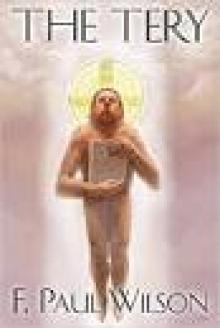 The Tery
The Tery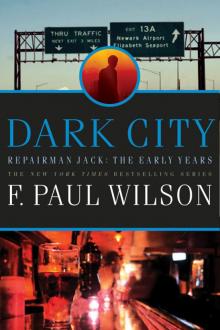 Dark City
Dark City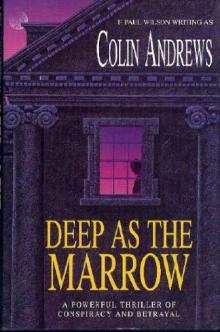 Deep as the Marrow
Deep as the Marrow The Fifth Harmonic
The Fifth Harmonic Conspiracies
Conspiracies Fear City
Fear City Wheels Within Wheels
Wheels Within Wheels Wayward Pines
Wayward Pines The Portero Method
The Portero Method All the Rage
All the Rage Infernal
Infernal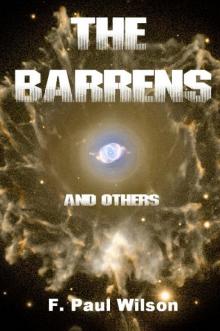 The Barrens & Others
The Barrens & Others The Keep
The Keep Quick Fixes: Tales of Repairman Jack
Quick Fixes: Tales of Repairman Jack Virgin
Virgin Hosts
Hosts Dydeetown World
Dydeetown World Midnight Mass
Midnight Mass Black Wind
Black Wind The Christmas Thingy
The Christmas Thingy The Last Rakosh
The Last Rakosh The Last Christmas: A Repairman Jack Novel
The Last Christmas: A Repairman Jack Novel SIMS
SIMS Thy Brother's Keeper
Thy Brother's Keeper Panacea
Panacea The Touch
The Touch Scenes from the Secret History
Scenes from the Secret History Scenes From the Secret History (The Secret History of the World)
Scenes From the Secret History (The Secret History of the World) Implant
Implant The Dark at the End
The Dark at the End Fatal Error
Fatal Error Wardenclyffe
Wardenclyffe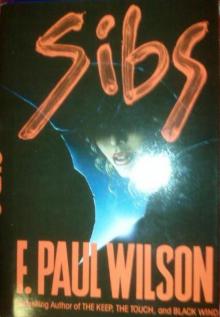 Sibs
Sibs The God Gene
The God Gene The Void Protocol
The Void Protocol Artifact
Artifact The Compendium of Srem
The Compendium of Srem Legacies
Legacies Reprisal
Reprisal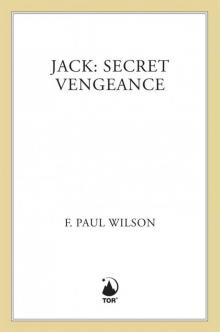 Jack: Secret Vengeance
Jack: Secret Vengeance Aftershock & Others: 19 Oddities
Aftershock & Others: 19 Oddities By the Sword
By the Sword Interlude at Duane's (Thriller: Stories to Keep You Up All Night)
Interlude at Duane's (Thriller: Stories to Keep You Up All Night) Fatal Error rj-13
Fatal Error rj-13 Crisscross rj-8
Crisscross rj-8 Codename: Chandler: Fix (Kindle Worlds Novella)
Codename: Chandler: Fix (Kindle Worlds Novella) Dydeetown World lf-4
Dydeetown World lf-4 Signalz
Signalz Codename_Chandler_Fix
Codename_Chandler_Fix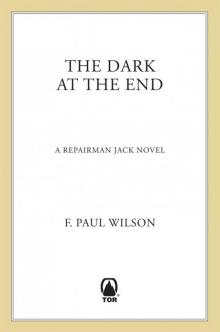 The Dark at the End (Repairman Jack)
The Dark at the End (Repairman Jack)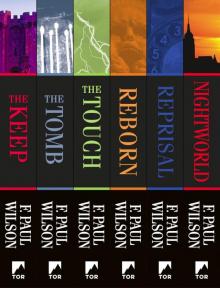 The Complete Adversary Cycle: The Keep, the Tomb, the Touch, Reborn, Reprisal, Nightworld (Adversary Cycle/Repairman Jack)
The Complete Adversary Cycle: The Keep, the Tomb, the Touch, Reborn, Reprisal, Nightworld (Adversary Cycle/Repairman Jack) Repairman Jack 03 - Conspiracies
Repairman Jack 03 - Conspiracies Ground Zero rj-13
Ground Zero rj-13 Repairman Jack 02 - Legacies
Repairman Jack 02 - Legacies The Dark at the End rj-15
The Dark at the End rj-15![Repairman Jack [02]-Legacies Read online](http://i1.bookreadfree.com/i/03/21/repairman_jack_02-legacies_preview.jpg) Repairman Jack [02]-Legacies
Repairman Jack [02]-Legacies Double Threat
Double Threat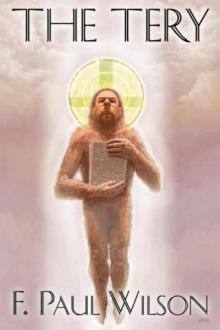 The Tery lf-5
The Tery lf-5 The God Gene: A Novel
The God Gene: A Novel Wayward Pines: The Widow Lindley (Kindle Worlds Novella)
Wayward Pines: The Widow Lindley (Kindle Worlds Novella) Reborn ac-4
Reborn ac-4 Reprisal ac-5
Reprisal ac-5 New Title 1
New Title 1 Healer lf-3
Healer lf-3 An Enemy of the State lf-1
An Enemy of the State lf-1 Interlude at Duane's
Interlude at Duane's By the Sword rj-12
By the Sword rj-12 Hardbingers rj-10
Hardbingers rj-10 Wheels Within Wheels lf-2
Wheels Within Wheels lf-2 Jack: Secret Circles
Jack: Secret Circles Nightworld ac-6
Nightworld ac-6 Quick Fixes - tales of Repairman Jack
Quick Fixes - tales of Repairman Jack Secret Circles yrj-2
Secret Circles yrj-2 Jack: Secret Histories
Jack: Secret Histories Haunted Air rj-6
Haunted Air rj-6 An Enemy of the State - a novel of the LaNague Federation (The LaNague Federation Series)
An Enemy of the State - a novel of the LaNague Federation (The LaNague Federation Series) Repairman Jack 05 - Hosts
Repairman Jack 05 - Hosts Cold City (Repairman Jack - the Early Years Trilogy)
Cold City (Repairman Jack - the Early Years Trilogy)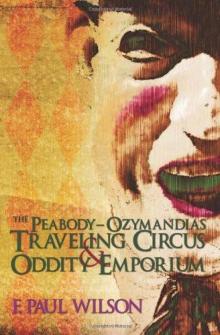 The Peabody-Ozymandias Traveling Circus & Oddity Emporium
The Peabody-Ozymandias Traveling Circus & Oddity Emporium Uncommon Assassins
Uncommon Assassins Adversary Cycle 01 - The Keep
Adversary Cycle 01 - The Keep Repairman Jack 06 - The Haunted Air
Repairman Jack 06 - The Haunted Air Bloodline rj-11
Bloodline rj-11 Ultimate Supernatural Horror Box Set
Ultimate Supernatural Horror Box Set The Keep ac-1
The Keep ac-1 Repairman Jack 04 - All the Rage
Repairman Jack 04 - All the Rage Aftershock & Others
Aftershock & Others All the Rage rj-4
All the Rage rj-4 Nightworld (Adversary Cycle/Repairman Jack)
Nightworld (Adversary Cycle/Repairman Jack) Conspircaies rj-3
Conspircaies rj-3 Hosts rj-5
Hosts rj-5 Infernal rj-9
Infernal rj-9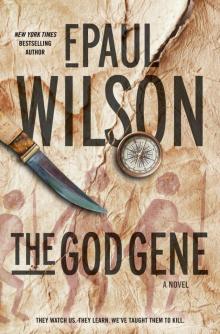 The God Gene: A Novel (The ICE Sequence)
The God Gene: A Novel (The ICE Sequence) Secret Histories yrj-1
Secret Histories yrj-1